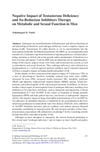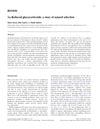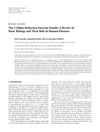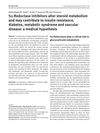Metabolic Dysfunction in Female Mice with Disruption of 5α-Reductase 1
January 2017
in “
Journal of Endocrinology/Journal of endocrinology
”
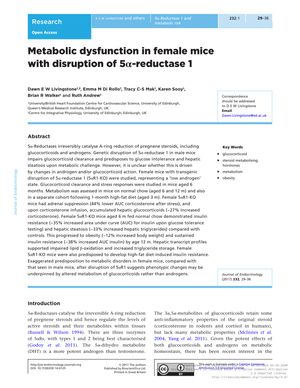
TLDR Female mice with disrupted 5α-reductase 1 had significant metabolic issues, including stress response problems, insulin resistance, liver fat buildup, and obesity.
In the 2017 study, female mice with a genetic disruption of 5α-reductase 1 (5αR1-KO), which represents a state of low androgen levels, were found to have significant metabolic dysfunction. These mice exhibited adrenal suppression, with a 44% lower corticosterone response to stress, and accumulated more hepatic glucocorticoids (approximately 27% increase) when infused with corticosterone. At 6 months old, the 5αR1-KO mice on a normal diet showed insulin resistance (approximately 35% increase in insulin AUC during glucose tolerance testing) and hepatic steatosis (approximately 33% increase in hepatic triglycerides). By 12 months, these mice developed obesity (approximately 12% increase in body weight) and sustained insulin resistance (approximately 38% increase in insulin AUC). Their hepatic transcript profiles indicated impaired lipid β-oxidation and increased triglyceride storage. Additionally, these mice were more prone to insulin resistance when subjected to a high-fat diet. The study concluded that the metabolic disorders observed in female mice were more pronounced than those seen in male mice with disrupted 5αR1, suggesting that these phenotypic changes might be primarily due to altered glucocorticoid metabolism rather than changes in androgen action.


